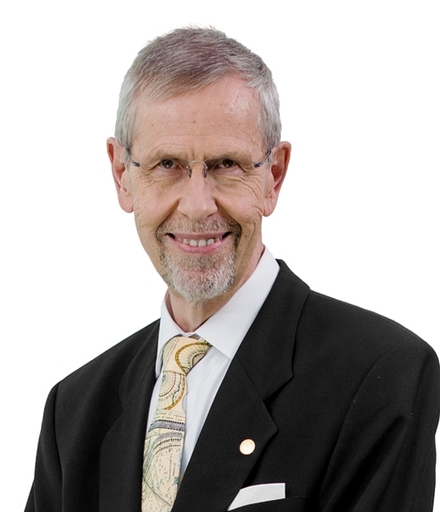Jukka TAKALA
Adjunct Professor, TUNI Past President, Board Member of ICOHCurrent Position:
Adjunct Professor, TUNI Past President, Board Member of ICOH
Education:BSc, MSc, LSc, DSc, Doctorate in Technology
Professional Experience:
Director in OSHA, Finland
ILO 1978-2006: Chief Tech.Adviser in Kenya, Thailand, ILO Director of OSH Programme, Geneva
EU-OSHA Director 2006-2011, Spain
Ministry of Manpower WSH-Institute Singapore Exec.Director & Consultant 2011-2017
Adj. Prof. Tampere University TUNI, continues
Special Honor:
Commander of the Most Noble Order of the Crown of Thailand
Special OSH Decoration, Gvt of Finland
FFOM (Fellow of the Faculty of Occupational Medicine), Royal College of Physicians of Ireland
Speaking Topics
Sustainable Safety and Health at Work
Health and work ability of the working population are a key asset to sustainability. The ultimate outcome of the input of the global workforce of 3.5 billion can be estimated by the total global gross domestic product (GDP). This was USD 104 trillion or 1012 USD a year (some 34,000 USD per worker). This GDP provides the economic and material resources, which sustain all other societal activities, including health and social services, training and education, research and cultural services. In addition to these material and tangible values, human labour is also behind the most intangible assets of society such as sustainability of the social fabric, level of education, general knowledge, and social cohesion. Furthermore, the global GDP provides funds to tackle global warming and all other needs of the humankind and the consequences to the entire globe. If and when the work process is less than ideal and includes shortcomings, such as occupational injuries, diseases, disorders and disturbances in the workplace these losses result in serious and substantial negative human consequences and significant material and production losses. Materials, Methods and Approaches for Change Past and often poor practices have been gradually improved, in particular, in high income countries, and related losses have been reduced while this has been benefitting only a fraction of the global workforce. At the same time new patterns of employment, such as pandemics, precariousness, distance and mobile working have been detected with the growing trends of “new economies”. The identification of such new risks and work processes will have to be tackled with the present methods at our disposal. Solutions anywhere can be used everywhere. We need: - better data, information and knowledge for all levels of action related to exposures and root causes, - new and better policies, regulatory framework and enforcement, and models from comparable situations, countries, regions, good practices of internationally agreed and nationally applied workplace action, - universal occupational health care and preventive occupational health services, - early identification and anticipation of problems, risk assessments and management at places of work, - national and workplace level collaboration between workers and employers, - well trained professional expertise in all related scientific and practical fields. Identified Results and Facts The latest just published global number of fatal occupational injuries and fatal work-related diseases has been estimated to be 2.9 million in 2021 https://doi.org/10.5271/sjweh.4132 Of these cardiovascular diseases caused 956,000 deaths, occupational cancer 842,000 deaths, and respiratory diseases 493,000 deaths. Occupational injuries caused 312,000 deaths. The economic loss caused by inadequate preventive measures has been calculated to be 5.8% of the Global Gross Domestic Product annually. Taiwan (11.5 million employed) had an estimated total occupational mortality of 10,302 and follows the patterns of the High Income economies, where the number of fatal accidents and communicable diseases is relatively low compared to work-related non-communicable diseases. The latest estimate for Taiwan show 425 (835 in 2015) fatal cases caused by occupational accidents, 9,877 (7,417 in 2015) fatalities caused by work-related diseases, and a GDP loss between 4.0 - 4.4 % annually. The major causes behind were occupational cancer, occupational circulatory diseases, occupational respiratory diseases and occupational accidents. For comparison Australia (12.9 million employed) had 11,421 total occupational mortality and followed similar patterns as in Taiwan. These results have been recently added by new information on biological risks which globally cause an estimated 550,000 deaths at work, see https://doi.org/10.1016/j.shaw.2023.10.005 This data includes the estimated Covid-19 caused deaths at work along with a wide range of exposures to further biological risks. An approximate share of the of these deaths and related disabilities in Taiwan could be obtained through the share of Taiwanese employment from the global workforce, or approximately 1,800 deaths from the global 550,000 deaths by biological risks at work. Conclusions and Recommendations The health systems - and occupational health and safety systems - throughout the world including industrialized countries must be better prepared. The challenge is to predict, prevent and manage risks as the numbers of “stable workplaces” diminish and the working life gets more and more fragmented, unstable. Traditional protection – prevention (of risks) – promotion of health and safety at work will have to include future foresight methods, anticipation of changes and preparedness for the largely unexpected risks and hazards. Work-related harm including occupational diseases and accidents, work disability, short- and long-term absences from work, premature retirement, limited working capacity and unemployment are caused by past occupational exposures. The trend for occupational cancer and occupational cardiovascular diseases is growing. Pandemics hit the workforce all over the world. This is not sustainable. Anticipation and preparedness are essential due to new risks such as the Covid-19 pandemic while new processes are vital to tackle other often completely unforeseen problems and disorders at work. To achieve practically all of the seventeen UN Sustainable Development Goals we’ll have to depend on the work carried out by the 3.5 billion strong workforce.

